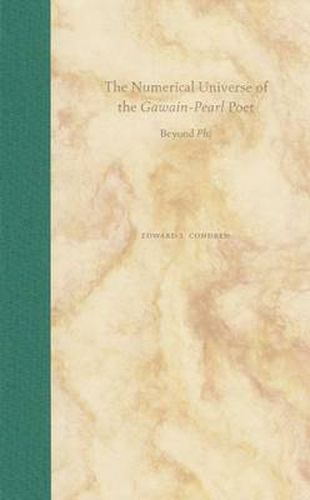Readings Newsletter
Become a Readings Member to make your shopping experience even easier.
Sign in or sign up for free!
You’re not far away from qualifying for FREE standard shipping within Australia
You’ve qualified for FREE standard shipping within Australia
The cart is loading…






Edward Condren examines the manuscript of the Gawain-Pearl Poet in the light of a compositional method well recognized from the literature of ancient Greece and Rome through the Renaissance but largely overlooked by modern criticism. Arguing that the manuscript is a single integrated artifact and not merely a collection, he shows that it is held together, as is the universe, by mathematical equations called the Divine Proportion in the Middle Ages and phi by modern mathematicians. More than a critical study of four poems in a manuscript, Condren’s detailed discussion of numeric theory reveals the medieval way of understanding the created universe in neo-Pythagorean and Platonic terms, and it underscores the importance of the quadrivium in the medieval view of an ordered universe. Drawing on medieval theories of proportion and harmony, Condren shows that the manuscript is more intricately designed and presented than anyone has yet recognized and that the poet who created this work was better educated and more self-consciously brilliant than most have imagined. He argues that the order in which the poems appear - with the two poems set in the Middle Ages placed at the beginning and end of the manuscript and the two set in the Judaic era located at the manuscript’s center - allows the literal narratives to exfoliate historically from the Old Testament world, through the era of the New Testament, and implicitly to the salvation that lies beyond. Working poem by poem, Condren details the mathematical forms governing the structure of the manuscript and guiding its progress, from the calculated use of decorated initials to sophisticated mathematics involving squares, primes, different counting systems, and geometrical schemes of the pentangle and ultimately the cross.
$9.00 standard shipping within Australia
FREE standard shipping within Australia for orders over $100.00
Express & International shipping calculated at checkout
Edward Condren examines the manuscript of the Gawain-Pearl Poet in the light of a compositional method well recognized from the literature of ancient Greece and Rome through the Renaissance but largely overlooked by modern criticism. Arguing that the manuscript is a single integrated artifact and not merely a collection, he shows that it is held together, as is the universe, by mathematical equations called the Divine Proportion in the Middle Ages and phi by modern mathematicians. More than a critical study of four poems in a manuscript, Condren’s detailed discussion of numeric theory reveals the medieval way of understanding the created universe in neo-Pythagorean and Platonic terms, and it underscores the importance of the quadrivium in the medieval view of an ordered universe. Drawing on medieval theories of proportion and harmony, Condren shows that the manuscript is more intricately designed and presented than anyone has yet recognized and that the poet who created this work was better educated and more self-consciously brilliant than most have imagined. He argues that the order in which the poems appear - with the two poems set in the Middle Ages placed at the beginning and end of the manuscript and the two set in the Judaic era located at the manuscript’s center - allows the literal narratives to exfoliate historically from the Old Testament world, through the era of the New Testament, and implicitly to the salvation that lies beyond. Working poem by poem, Condren details the mathematical forms governing the structure of the manuscript and guiding its progress, from the calculated use of decorated initials to sophisticated mathematics involving squares, primes, different counting systems, and geometrical schemes of the pentangle and ultimately the cross.